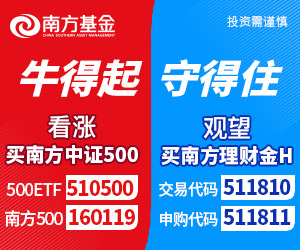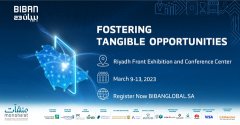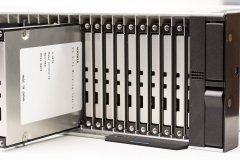Strong COVID-19 headwinds; Power Grids divestment completed
Orders $6.1 billion, -18%; comparable -14%1
Revenues $6.2 billion, -14%; comparable -10%
Income from operations $571 million; margin 9.3%
Operational EBITA1 $651 million; margin1 10.6%
Net income $319 million, +398%2
Basic EPS $0.15, +398%3; operational EPS1 $0.22, -35%
Cash flow from operating activities $680 million; resilient cash delivery expected for the full year
Power Grids divestment completed July 1
Net cash proceeds to be returned to shareholders, as planned
ZURICH -- (BUSINESS WIRE) --
“As expected, the second quarter has been heavily impacted by COVID-19. At the same time, we were very focused on cost mitigation efforts which provided some resilience. Operational margins for the Group turned out better than we had anticipated, with Motion doing particularly well,” said Björn Rosengren, CEO of ABB. “A lot of uncertainty remains and we still see some challenging quarters ahead. At the same time, our way forward is clear. We will continue to roll out our new operating model, review our business portfolio and start our share buyback program.”
|
KEY FIGURES |
|
|
CHANGE |
|
|
CHANGE |
||
|
($ millions, unless otherwise indicated) |
Q2 2020 |
Q2 2019 |
US$ |
Comparable |
H1 2020 |
H1 2019 |
US$ |
Comparable |
|
Orders |
6,054 |
7,401 |
-18% |
-14% |
13,400 |
15,014 |
-11% |
-7% |
|
Revenues |
6,154 |
7,171 |
-14% |
-10% |
12,370 |
14,018 |
-12% |
-8% |
|
Income from operations |
571 |
123 |
+364% |
|
944 |
713 |
+32% |
|
|
Operational EBITA1 |
651 |
825 |
-21% |
-20%4 |
1,287 |
1,591 |
-19% |
-18%4 |
|
as % of operational revenues |
10.6 |
11.5 |
-0.9 pts |
|
10.4 |
11.4 |
-1.0 pts |
|
|
Income from continuing operations, net of tax |
395 |
(54) |
n.a. |
|
721 |
361 |
+100% |
|
|
Net income attributable to ABB |
319 |
64 |
+398% |
|
695 |
599 |
+16% |
|
|
Basic EPS ($) |
0.15 |
0.03 |
+398%3 |
|
0.33 |
0.28 |
+16%3 |
|
|
Operational EPS ($)1 |
0.22 |
0.34 |
-35%3 |
-33%3 |
0.52 |
0.64 |
-19%3 |
-18%3 |
|
Cash flow from operating activities5 |
680 |
0 |
n.a. |
|
103 |
(256) |
n.a. |
|
|
On December 17, 2018, ABB announced an agreed sale of its Power Grids business. Consequently, the results of the Power Grids business are presented as discontinued operations. |
Q2 2020 Group results
Summary
Trading conditions during the second quarter were challenging, influenced by the escalating COVID-19 pandemic. Alongside the sharp drop in short-cycle demand that lowered product volumes, system installation and service activities faced extensive mobility restrictions. Reflecting this, orders and revenues for the second quarter period were severely dampened across the Group when compared to the prior year period. Motion’s result fared better, aided by a strong rebound in China and strong backlog execution. Despite intensified cost mitigation, operational margins contracted in Electrification, Industrial Automation and Robotics & Discrete Automation compared to the prior year period, while Motion improved its margin year-on-year.
Orders
Orders were 18 percent lower (14 percent comparable) in the quarter compared to the prior year period. Foreign exchange translation effects had a net negative impact of 2 percent and portfolio changes a net negative impact of 2 percent. The order backlog was 1 percent lower (up 5 percent comparable) at the end of the quarter.
– Orders from Europe were 18 percent lower (14 percent comparable). Most countries had materially lower orders, driven mainly by lockdowns. Orders were 4 percent lower in Germany (2 percent comparable), 4 percent lower in the UK (up 1 percent comparable) and 3 percent lower in Switzerland (4 percent comparable). Orders fell materially in Italy, which was 13 percent lower (9 percent comparable), and in Finland, Norway, Spain and the Netherlands declined even more steeply. Orders from Sweden advanced 9 percent (11 percent comparable).
– Orders from the Americas were 26 percent lower (23 percent comparable), with nearly all countries reporting lower order levels. In the US, orders declined by 25 percent (23 percent comparable).
– In Asia, Middle East and Africa (AMEA), orders were 11 percent lower (5 percent comparable), with a notable drop in India of 40 percent (33 percent comparable). In China, demand improved sequentially; orders were 3 percent lower (up 3 percent comparable) on a year-on-year basis in the second quarter.
End-market overview
– In discrete industries, orders were disrupted in most end-markets, with orders from automotive and automotive sector-related industries as well as machine builders severely impacted. 3C activities were challenged, although they trended more favorably toward quarter end.
– Process industry activities fell sharply in the quarter. Service activities were severely constrained by lockdowns, as well as customers reducing operational expenditure. In addition, multiple capital expenditure projects have been deferred as customers adapt to a softer demand outlook.
– In transport & infrastructure, investments in rail, e-mobility, water & wastewater and data centers continued. As well, orders were resilient in electrical distribution utilities. However, marine and renewables activities declined steeply.
– Buildings were challenged, with construction activity constrained by lockdowns.
Revenues
Revenues were 14 percent lower (10 percent comparable) year-on-year. Foreign exchange translation effects had a net negative impact of 2 percent and portfolio changes a net negative impact of 2 percent. The book-to-bill ratio for the quarter was 0.98x1, compared to 1.03x in the prior year period.
Income from operations and operational EBITA
Income from operations of $571 million increased 364 percent. Compared to the prior year, the result benefited mainly from the absence of the charge booked in 2019 in relation to the sale of the solar inverters business. The year-on-year increase was also aided by a net $86 million gain related to timing differences on commodities and foreign exchange, and lower expenses related to restructuring and integration efforts.
Operational EBITA1 of $651 million was 21 percent lower (20 percent in local currencies). The operational EBITA margin1 of 10.6 percent was 90 basis points lower year-on-year. Margins were higher in Motion while all other businesses reported lower margins compared to the prior year period, mainly reflecting lower volumes, despite intensified cost mitigation efforts. Corporate & Other costs, including $19 million stranded costs, improved when compared to the prior year period.
Net income and basic earnings per share
Net income from continuing operations was $395 million, significantly higher mainly due to the aforementioned absence of the solar inverters charge. The Group’s effective tax rate was 24.8 percent. Discontinued operations reported $49 million in losses, reflecting a material non-operational pension charge as well as subdued operational performance mainly due to COVID-19 disruption.
Group net income attributable to ABB was $319 million and basic EPS $0.15, 398 percent higher for both on a year-on-year basis. Operational EPS of $0.221 was 35 percent3 lower compared to the prior year period.
Cash flow from operating activities
Cash flow from operating activities was $680 million, versus $0 million in the second quarter of 2019. Despite the reduction in business activities, cash flow from operating activities from continuing operations improved materially, while the amount from discontinued operations was $32 million.
Cash flow from operating activities from continuing operations was supported mainly by timing differences on employee incentive payments, which were distributed in the first quarter this year as opposed to the second quarter last year. As well, cash flow benefited from timing of tax payments and favorable net working capital movement. Net working capital as a percent of revenues ended the quarter at 12.6 percent.
Q2 2020 business area results
All commentary by business area relates to second quarter results on a year-on-year basis.
Electrification (EL)
|
KEY FIGURES |
|
|
CHANGE |
|
|
CHANGE |
||
|
($ millions, unless otherwise indicated) |
Q2 2020 |
Q2 2019 |
US$ |
Comparable |
H1 2020 |
H1 2019 |
US$ |
Comparable |
|
Orders |
2,737 |
3,339 |
-18% |
-12% |
5,858 |
6,702 |
-13% |
-7% |
|
Order backlog |
4,465 |
4,553 |
-2% |
+6% |
4,465 |
4,553 |
-2% |
+6% |
|
Revenues |
2,764 |
3,272 |
-16% |
-10% |
5,537 |
6,329 |
-13% |
-9% |
|
Operational EBITA1 |
348 |
440 |
-21% |
|
666 |
817 |
-18% |
|
|
as % of operational revenues |
12.6% |
13.5% |
-0.9 pts |
|
12.0% |
12.9% |
-0.9 pts |
|
|
– |
Orders were impacted by a fall in short-cycle demand including in the buildings market, and a material decline in the oil and gas and renewables markets. Select markets including electric distribution utilities, rail, e-mobility and data centers offered relative resilience. All regions declined, with demand from the Americas materially impacted by COVID-19. |
|
|
– |
Revenues declined due to weak short-cycle business as well as constrained project activities, mainly in Distribution Solutions. |
|
|
– |
Margin contraction was essentially driven by lower volumes. This was partly mitigated by supportive cost savings initiatives and resilient pricing, as well as the ongoing turnaround of GEIS and Installation Products, both of which remain firmly on track. |
Industrial Automation (IA)
|
KEY FIGURES |
|
|
CHANGE |
|
|
CHANGE |
||
|
($ millions, unless otherwise indicated) |
Q2 2020 |
Q2 2019 |
US$ |
Comparable |
H1 2020 |
H1 2019 |
US$ |
Comparable |
|
Orders |
1,305 |
1,622 |
-20% |
-17% |
3,062 |
3,288 |
-7% |
-4% |
|
Order backlog |
5,210 |
5,240 |
-1% |
+3% |
5,210 |
5,240 |
-1% |
+3% |
|
Revenues |
1,382 |
1,580 |
-13% |
-9% |
2,844 |
3,098 |
-8% |
-5% |
|
Operational EBITA1 |
115 |
190 |
-39% |
|
259 |
395 |
-34% |
|
|
as % of operational revenues |
8.4% |
12.1% |
-3.7 pts |
|
9.1% |
12.8% |
-3.7 pts |
|
|
– |
Orders reflect a sharp downturn across energy and process industries as well as a fall-off in marine, even while the business area benefited from select large order wins. Orders were lower in all regions, with a severe drop in the Americas. |
|
|
– |
Revenues were impacted by a substantial drop in book-and-bill activities, particularly mobility constrained services. |
|
|
– |
Aside from lower volumes, margins were held back by under-absorption and negative mix, mainly from lower service activities. |
Motion (MO)
|
KEY FIGURES |
|
|
CHANGE |
|
|
CHANGE |
||
|
($ millions, unless otherwise indicated) |
Q2 2020 |
Q2 2019 |
US$ |
Comparable |
H1 2020 |
H1 2019 |
US$ |
Comparable |
|
Orders |
1,586 |
1,762 |
-10% |
-7% |
3,487 |
3,562 |
-2% |
0% |
|
Order backlog |
3,384 |
3,050 |
+11% |
+13% |
3,384 |
3,050 |
+11% |
+13% |
|
Revenues |
1,583 |
1,641 |
-4% |
-1% |
3,093 |
3,246 |
-5% |
-3% |
|
Operational EBITA1 |
279 |
275 |
+1% |
|
509 |
538 |
-5% |
|
|
as % of operational revenues |
17.7% |
16.7% |
+1.0 pts |
|
16.5% |
16.6% |
-0.1 pts |
|
|
–
|
|
A broad-based short-cycle downturn weighed on orders, even while orders remained healthy in the rail and chemicals sectors. Orders across the Americas fell steeply, substantially mitigated by a strong rebound in China. |
|
– |
Resilient revenue development mainly reflects strong backlog execution. |
|
|
– |
Margin expansion was driven by strong cost actions and favorable mix. |
Robotics & Discrete Automation (RA)
|
KEY FIGURES |
|
|
CHANGE |
|
|
CHANGE |
||
|
($ millions, unless otherwise indicated) |
Q2 2020 |
Q2 2019 |
US$ |
Comparable |
H1 2020 |
H1 2019 |
US$ |
Comparable |
|
Orders |
638 |
883 |
-28% |
-25% |
1,449 |
1,850 |
-22% |
-19% |
|
Order backlog |
1,478 |
1,586 |
-7% |
-4% |
1,478 |
1,586 |
-7% |
-4% |
|
Revenues |
629 |
845 |
-26% |
-23% |
1,300 |
1,696 |
-23% |
-21% |
|
Operational EBITA1 |
43 |
105 |
-59% |
|
102 |
200 |
-49% |
|
|
as % of operational revenues |
6.8% |
12.3% |
-5.5 pts |
|
7.8% |
11.8% |
-4.0 pts |
|
|
– |
Against a tough comparison base for large orders, RA’s order result moved sharply lower, as expected. Activity levels declined materially across key end-markets, including automotive, general industry and machine builders. Orders fell sharply in Europe and the Americas, while demand from the AMEA region remained weak. |
|
|
– |
Revenues were severely impacted by lower systems business and service activities, as well as lower product volumes. |
|
|
– |
Margin contraction reflects steep volume decline, which outweighed supportive cost actions. |
Corporate and Other
|
KEY FIGURES |
|
|
CHANGE |
|
|
CHANGE |
|
($ millions, unless otherwise indicated) |
Q2 2020 |
Q2 2019 |
US$ |
H1 2020 |
H1 2019 |
US$ |
|
Orders |
(212) |
(205) |
(7) |
(456) |
(388) |
(68) |
|
Revenues |
(204) |
(167) |
(37) |
(404) |
(351) |
(53) |
|
|
||||||
|
Income from operations |
(153) |
(285) |
+132 |
(326) |
(515) |
+189 |
|
Operational EBITA1 |
(134) |
(185) |
+51 |
(249) |
(359) |
+110 |
|
– |
Corporate and Other operational EBITA improved to -$134 million. Compared to a year ago this reflects lower stranded and lower ongoing corporate costs. |
|
|
– |
In the second quarter of 2020, stranded costs of $19 million were recognized, impacting operational EBITA margin by 30 basis points. |
|
|
Corporate and Other orders and revenues primarily represent intersegment eliminations. |
||
Capital structure optimization
ABB divested 80.1 percent of its Power Grids business to Hitachi on July 1, 2020, as planned, delivering on an important milestone in the company’s transformation agenda as announced in December 2018.
ABB is committed to returning to shareholders net cash proceeds from the Power Grids divestment of $7.6-7.8 billion. ABB will initially launch a share buyback program of 10 percent6 of the company’s share capital to begin imminently. This represents about 180 million shares in addition to those already held in treasury.
Also, as part of the overall capital structure optimization program, ABB has now repaid fully the €2 billion short-term revolving credit facility put in place to strengthen liquidity in the face of COVID-19. The Group plans to implement further deleveraging actions, including a review of certain defined benefit pension structures, as well as repayment of a €1 billion bond that matures in October 2020. ABB aims to maintain its single A credit rating.
“ABB’s capital structure optimization during the coming years will focus on shareholder returns, by executing on its share buyback program, as planned, as well as by improving the company’s risk profile and finance costs through an efficient deleveraging strategy. In these challenging times, ABB has a resilient financial framework and strong balance sheet,” said Timo Ihamuotila, CFO of ABB.
Transformation progress
ABB’s CEO presented his First Perspectives to investors on June 10, 2020, outlining ABB’s way forward on creating value for shareholders, customers and employees. Following a new ABB Way of working, the Group intends to accelerate its transition to a fully decentralized operating model. This comprises four business areas – Electrification, Industrial Automation, Motion and Robotics & Discrete Automation – with 18 divisions, governed by a lean corporate. Going forward, the 18 divisions will have full accountability for their P&L and operational balance sheet. ABB’s management team will prioritize improvement of the Group’s financial performance, with a clear profitability focus for underperforming divisions, as well as active portfolio management. A new, division level, scorecard system using standardized KPIs to measure performance and drive continuous improvement will be introduced in the third quarter of 2020. ABB is on track for faster delivery of ~$500 million per annum net savings initiated through the ABB-OS simplification program.
ABB plans to host a Capital Markets Day in November 2020 that will provide more detail on the portfolio’s evolution and business area and divisional strategies, while also setting out ABB’s 2030 sustainability targets.
Short-term outlook
The global economy is expected to contract in 2020 after a rapid deterioration in outlook driven by the COVID-19 pandemic. Despite unprecedented stimuli by governments and central banks around the world and a recovery in economic activity in China in the second quarter, macro-indicators continue to point to a deep global recession with uncertainty around the pace of recovery. Many countries continue to face ongoing or new restrictions, with anticipated long-term economic consequences.
The impact of COVID-19 continues to weigh on the short-term outlook across many end-markets, and particularly in oil and gas, conventional power generation, automotive, marine and buildings. Some end markets such as electrical distribution, transport, data centers and food and beverage continue to show relative resilience.
Potential easing of COVID-19 impacts remain subject to considerable uncertainties. Against this background, ABB expects some improvement in year-on-year order decline already in the third quarter. Revenues are expected to remain strongly impacted on a year-on-year basis, at best recovering somewhat in the fourth quarter.
As ABB continues to adapt its operations and cost base to safeguard profitability, it expects its operational margin to steady on a sequential basis. The company anticipates resilient cash delivery for the full year.
More information
The Q2 2020 results press release and presentation slides are available on the ABB News Center at www.abb.com/news and on the Investor Relations homepage at www.abb.com/investorrelations. A conference call and webcast for analysts and investors is scheduled to begin today at 10:00 a.m. CEST (9:00 a.m. BST). To pre-register for the conference call or to join the webcast, please refer to the ABB website: www.abb.com/investorrelations. The recorded session will be available after the event on ABB’s website.
ABB (ABBN: SIX Swiss Ex) is a leading global technology company that energizes the transformation of society and industry to achieve a more productive, sustainable future. By connecting software to its electrification, robotics, automation and motion portfolio, ABB pushes the boundaries of technology to drive performance to new levels. With a history of excellence stretching back more than 130 years, ABB’s success is driven by about 110,000 talented employees in over 100 countries.
|
INVESTOR CALENDAR |
|
|
Q3 2020 results |
October 23, 2020 |
|
Capital Markets Day |
November 2020 |
Important notice about forward-looking information
This press release includes forward-looking information and statements as well as other statements concerning the outlook for our business, including those in the sections of this release titled “Capital structure optimization”, “Transformation progress” and “Short-term outlook”. These statements are based on current expectations, estimates and projections about the factors that may affect our future performance, including global economic conditions, the economic conditions of the regions and industries that are major markets for ABB. These expectations, estimates and projections are generally identifiable by statements containing words such as “anticipates”, “expects,” “believes,” “estimates,” “plans”, “targets” or similar expressions. However, there are many risks and uncertainties, many of which are beyond our control, that could cause our actual results to differ materially from the forward-looking information and statements made in this press release and which could affect our ability to achieve any or all of our stated targets. The important factors that could cause such differences include, among others, business risks associated with the volatile global economic environment and political conditions, costs associated with compliance activities, market acceptance of new products and services, changes in governmental regulations and currency exchange rates and such other factors as may be discussed from time to time in ABB Ltd’s filings with the U.S. Securities and Exchange Commission, including its Annual Reports on Form 20-F. Although ABB Ltd believes that its expectations reflected in any such forward-looking statement are based upon reasonable assumptions, it can give no assurance that those expectations will be achieved.
Zurich, July 22, 2020
Björn Rosengren, CEO
|
__________ |
|
|
1 |
For a reconciliation of non-GAAP measures, see “supplemental reconciliations and definitions” in the attached Q2 2020 Financial Information. |
|
2 |
The result benefited mainly from the absence of the charge booked in 2019 in relation to the sale of the solar inverters business. |
|
3 |
EPS growth rates are computed using unrounded amounts. Comparable operational earnings per share is in constant currency (2019 exchange rates not adjusted for changes in the business portfolio). |
|
4 |
Constant currency (not adjusted for portfolio changes). |
|
5 |
Amount represents total for both continuing and discontinued operations. |
|
6 |
Maximum 10 percent of the company’s issued share capital, including treasury shares. |
View source version on businesswire.com: https://www.businesswire.com/news/home/20200721005994/en/
CONTACT:
ABB Ltd
Affolternstrasse 44
8050 Zurich
Switzerland
Media Relations
Phone: +41 43 317 71 11
E-mail: media.relations@ch.abb.com
or
Investor Relations
Phone: +41 43 317 71 11
E-mail: investor.relations@ch.abb.com
责任编辑: admin
珠海都市网所有文字、图片、视频、音频等资料均来自互联网,不代表本站赞同其观点,本站亦不为其版权负责。相关作品的原创性、文中陈述文字以及内容数据庞杂本站无法一一核实,如果您发现本网站上有侵犯您的合法权益的内容,请联系我们,本网站将立即予以删除!

焦点新闻
热图要闻
热门排行
- PLDA宣布推出Robust Verification Toolset,以提
- Ludovic Blanquet Joins smartTrade as Chief Pro
- Wolters Kluwer FRR Launches OneSumX for Risk M
- 香港旅遊發展局訂立統一衞生防疫指引 向旅客傳遞
- Nanboya香港辦事處遷至佐敦,首個海外採購辦公室
- GSMA Announces Date Changes for its MWC21 Seri
- 罗克韦尔自动化收购网络安全公司
- Standard Digital Group Is Now Accepting Online
- Nanboya香港辦事處遷至佐敦,首個海外採購辦公室
- Standard Digital Group Is Now Accepting Online







